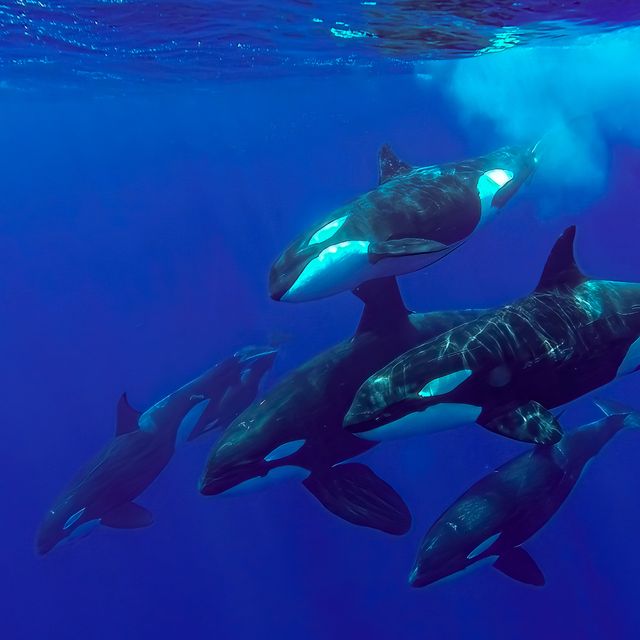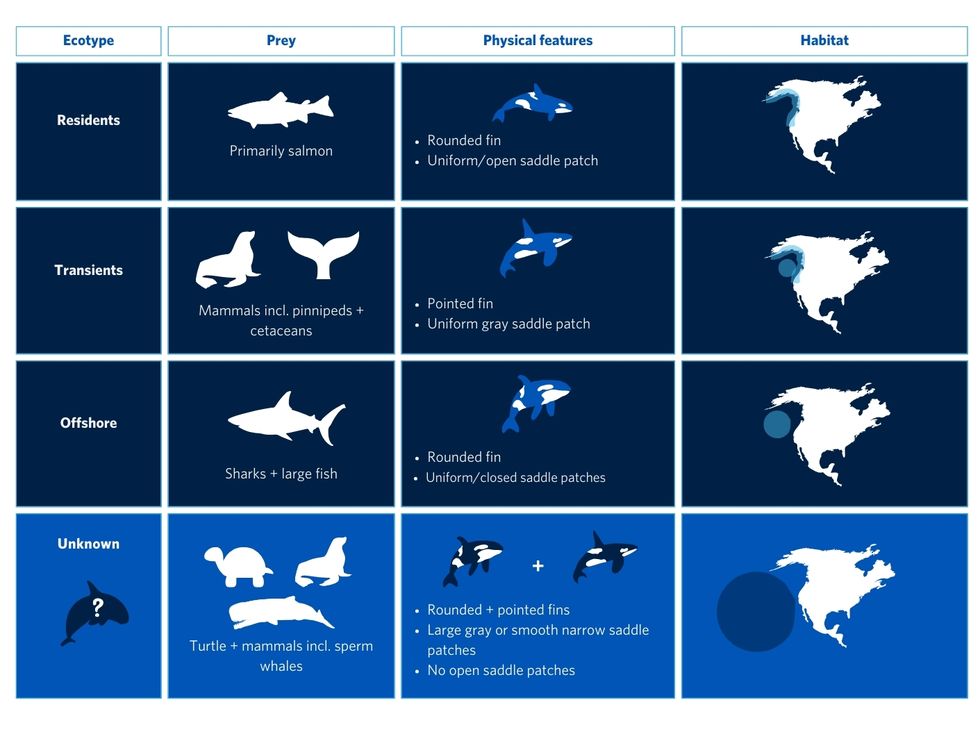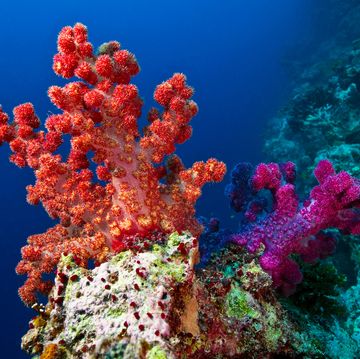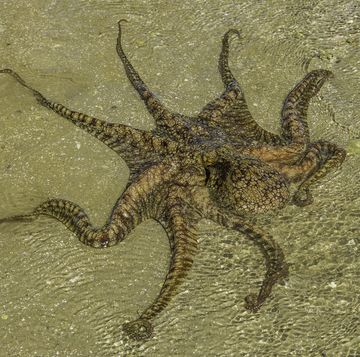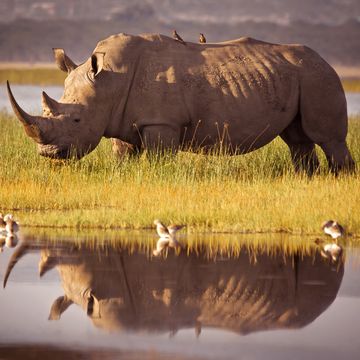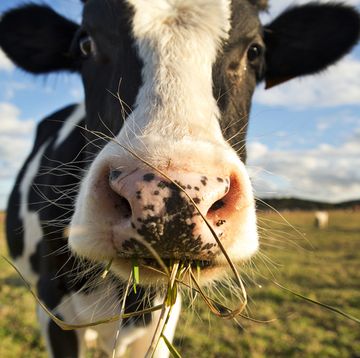- Scientists know of three distinct ecotypes of killer whales—offshore, transients, and residents—that make up the orca population along the California and Oregon coast.
- But a new study suggests, drawing on data gathered over more than 25 years, that there could be a fourth group lurking out in the open ocean, displaying different physical attributes, dietary patterns, and hunting strategies.
- Scientists hope that future sound recordings of these orcas, along with further DNA analyses, will be able to discern for certain whether these orcas represent a new ecotype.
Killer whales are some of the most fascinating sea creatures on planet Earth. Known more accurately as orcas (seeing as the black-and-white mammals are actually members of the dolphin family), these awe-inspiring mammals follow a matriarchal hierarchy, are excellent hunters, and exhibit dissimilar behaviors among the various pods across the globe—they even display varying “accents” among different populations.
Now, a new dialect may be added to that underwater sonic chorus, as scientists from the University of British Columbia (UBC) have possibly identified a new group of orcas located far off the coast of California and Oregon. With 49 orcas spotted during nine encounters from 1997 to 2021, the scientists hypothesize that a new group could have possibly formed in the open ocean—though they don’t rule out the possibility that it’s a subpopulation of another group. The results of the study were published in the journal Aquatic Mammals.
“It’s pretty unique to find a new population,” co-author and professor at UBC’s Institute for the Ocean and Fisheries (IOF) Andrew Trites said in a press statement. “It takes a long time to gather photos and observations to recognize that there’s something different about these killer whales.”
There are three orca ecotypes—distinct forms within a species—that live off the coast of California and Oregon: residents, offshore, and transients. These orcas differ physically (rounded vs. pointed fins, etc...), behaviorally, and dietarily. Trites and his colleagues argue that a fourth, currently unnamed ecotype might also exist further out in the open ocean. When analyzing the 49 orcas spotted across nine encounters, none of them could be matched with any of the three orca groups. But it was their hunting patterns that truly astounded the researchers.
“In one of the first encounters researchers had with a pod of these oceanic killer whales, they were observed taking on a herd of nine adult female sperm whales, eventually making off with one. It is the first time killer whales have been reported to attack sperm whales on the west coast,” first author Josh McInnes, a masters student at UBC, said in a press statement. “Other encounters include an attack on a pygmy sperm whale, predation on a northern elephant seal and Risso’s dolphin, and what appeared to be a post-meal lull after scavenging a leatherback turtle.”
This data makes this pod particularly aggressive hunters compared to their other orca counterparts. However, researchers also noted another commonality among almost all 49 orcas — a regular pattern of a particular shark’s bite. These scars are a parting gift from the cookiecutter shark (Isistius brasiliensis), which provides a significant clue for discerning where this distinct orca population usually resides. These pint-sized sharks, never growing bigger than 20 inches, use sucking lips and pointy teeth to launch onto animals and then spins its body to remove a cookie cutter-shaped hole (hence the name) from its prey. However, these pint-sized sharks tend to only live in the open ocean, which means these orcas likely also prefer waters far off the coast.
To discern if this truly is a new population, or simply a subspecies of transient orcas, scientists will need to gather DNA samples to determine if there are any genetic differences between these orcas and other ecotypes. They also plan to collect and analyze recordings of the orcas calls.
It seems that after more than two decades of gathering data, a new population of orca is finally beginning to take shape in the open Pacific.
Darren lives in Portland, has a cat, and writes/edits about sci-fi and how our world works. You can find his previous stuff at Gizmodo and Paste if you look hard enough.
